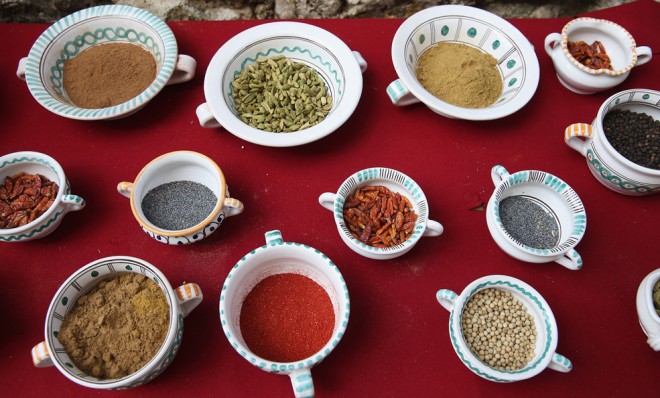How oregano and coriander can kill you
Just when you thought it was safe to go back to the spice rack

Most people think of raw chicken when they think of salmonella, the bacteria that kills 450 people in the United States each year, while making 1.2 million sick.
Now it looks like seasoning your chicken could be just as dangerous.
Nearly 7 percent of spice shipments investigated by the U.S. Food and Drug Administration during a recent study were contaminated by salmonella, reports The New York Times.
The Week
Escape your echo chamber. Get the facts behind the news, plus analysis from multiple perspectives.

Sign up for The Week's Free Newsletters
From our morning news briefing to a weekly Good News Newsletter, get the best of The Week delivered directly to your inbox.
From our morning news briefing to a weekly Good News Newsletter, get the best of The Week delivered directly to your inbox.
Salmonella was found in 15 percent of coriander, 12 percent of oregano and basil, 4 percent of black pepper, and also in shipments of sesame seeds, curry powder, and cumin.
Those numbers might even be on the low side. Illnesses are tough to trace to spices because they can be used years after they're purchased. And when people get sick, they usually blame the chicken — not the oregano it's been coated with.
The study, which will be released soon to the general public, named two countries as the biggest exporter of tainted spices: Mexico and India, whose shipments were 14 percent and 9 percent contaminated, respectively.
India, however, might be the bigger problem, because it ships four times more spices to the United States than Mexico does, according to the Times.
A free daily email with the biggest news stories of the day – and the best features from TheWeek.com
Why are spices in India becoming contaminated with salmonella? Exposure to dirt and dung, often when left on dirty surfaces to dry in the sun.
In fact, so many Indian shipments of black pepper tested positive for salmonella in 1987 that the FDA banned them for two years. Now, more farmers in India are boiling their pepper seeds and drying them on tarps to prevent contamination.
Ovens could cut down on salmonella levels even more; unfortunately, according to the Times, the cost of the electricity is too much for most Indian farmers to afford.
Luckily for home gourmets, there is a simple solution to this problem: Cook your food after seasoning it. High temperatures kill bacteria in spices just like they do in meat.
Keith Wagstaff is a staff writer at TheWeek.com covering politics and current events. He has previously written for such publications as TIME, Details, VICE, and the Village Voice.
-
 5 loony toons about the Warner Bros. buyout
5 loony toons about the Warner Bros. buyoutCartoons Artists take on movie theaters, high quality cinema, and more
-
 Political cartoons for December 13
Political cartoons for December 13Cartoons Saturday's political cartoons include saving healthcare, the affordability crisis, and more
-
 Farage’s £9m windfall: will it smooth his path to power?
Farage’s £9m windfall: will it smooth his path to power?In Depth The record donation has come amidst rumours of collaboration with the Conservatives and allegations of racism in Farage's school days